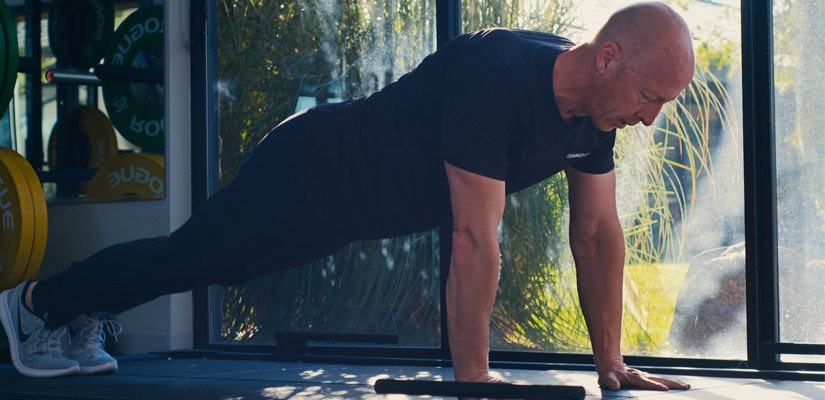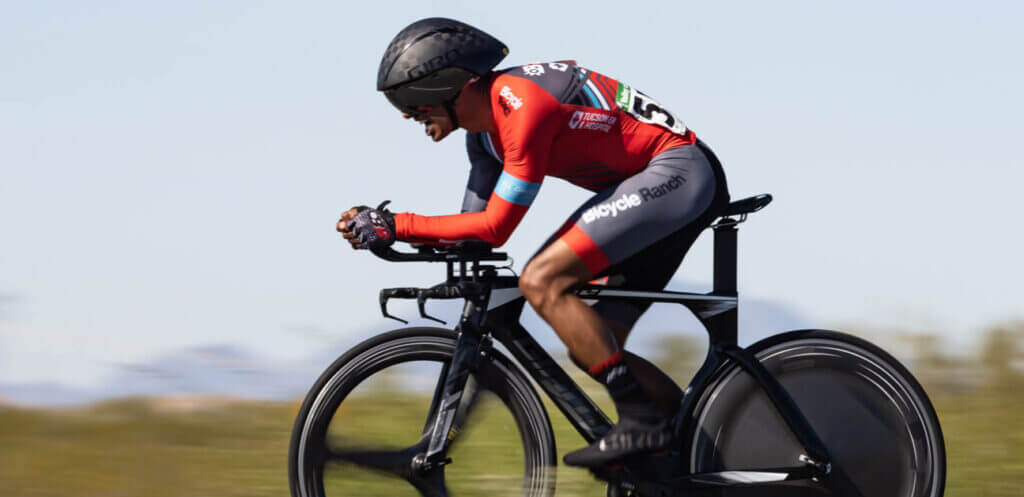5 Strength Training Exercises for Cyclists to Integrate Into Your Training Plan

Importance of Strength Training for Cyclists
The demands of being on the bike for extended durations, coupled with constantly turning over the pedals, brings to light the importance of functional strength for cyclists. Functional strength sounds like a bit of a buzzword, but it has real application in the world of endurance sports.
Strength training isn’t often associated with endurance, but we believe there are real benefits to be gained from integrating strength training into your cycling training plan.
Strength Exercises for Cyclists
- Spiderman Push-Ups
- Pistol Squats
- Side Planks
- Deadlifts
- Planking Rows (Renegade Rows)
Read below for detailed instructions for each exercise.
Prioritize Your Training to Align with Your Goals
Are you primarily a weightlifter or a bike rider? Prioritize what’s most important. Although strength training has its application in cycling, don’t let the fatigue from your strength training impact the success of your cycling training and compromise your recovery.
This is one reason we recommend spacing your strength training workouts as far apart from your cycling workouts as possible. For example, if you do your cycling workout in the morning, it’s best to tackle your strength training routine in the evening.
Experiment, Experiment, Experiment
If integrating strength training into your cycling is new to you, there is a transition period of becoming accustomed to the shift in training load and emphasis. And like all forms of training, this is a progressive process.
If after a few weeks all you’re noticing is heavier levels of fatigue, it’s time to switch things up. Periodize your strength training much the same as your bike conditioning is periodized. This periodized structure typically follows a progressive structure that can fit nicely in your cycling training plan.
Integrating Strength Training into Your Cycling Training Plan Throughout the Year
The types of strength training you perform will depend on where you are in the Base, Build, and Specialty training phases. Where most cyclists misunderstand strength training’s application is by assuming it is only useful during the off-season. But really, strength training should take place on a year-round basis.
An early adaptive phase and period of max-strength transition training typically occurs in the off-season. Primarily you’ll do most of your strength training in the Base Phase, where your training loads are lighter and important race days are still far down the road. Then when you move into the Build and Specialty Phases, strength training takes a bit of a backseat to the focus on cycling as you move into more of a maintenance phase with your strength training.
Cycling Disciplines that Benefit the Most from Strength Training
While all riders can benefit from reinforced positioning on the bike and improved strength, certain cycling disciplines are likely to see more, or different, benefits than others. An example is to consider is a mountain biker and a time trialist.
It may seem obvious that a mountain biker could benefit from strength training as they navigate technical terrain and physically challenging descents, but even a relatively static discipline like time trialing will greatly benefit from strength training. An aerodynamically efficient position usually comes at the cost of comfort and can be difficult to maintain over time. If you don’t have the strength to hold that aero position, you could be bleeding valuable time.
Bodyweight Exercises for Cyclists
Spiderman Push-Ups
Trunk/core strength, or anything between the hips and the shoulders gains benefit from performing spiderman push-ups. Additionally, an added benefit is the element of hip flexibility attained through bringing each knee to its corresponding elbow.
Pistol Squats
Single leg strength and hip flexibility is the goal of a properly executed pistol squat. Following a progressive approach with the pistol squat is recommended as most athletes will have a difficult time safely executing a full pistol squat.
Side Planks
The core is largely engaged in the side plank, but when including variations on the side plank, you’ll gain the added benefit of increased core, shoulder, and tricep/bicep engagement as well.
Weight Training Exercises for Cyclists
Deadlifts
Hip and posterior chain strength are the main focus of a proper deadlift. The posterior chain essentially refers to any of the muscles along the backside of the body, meaning deadlifts can be very impactful for solidifying your comfort in positioning. It can be a process dialing in a proper deadlift, so be cautious.
Planking Rows (Renegade Rows)
Rows done in this push-up position integrates strength with stability. With the additional benefit to the “lats” (lattimus dorsi), and core, the ability to sustain proper position on the bike can become more manageable.
Conclusion
There are no hard and fast rules coupling your strength training with cycling training. We have had to experiment with what works, which is what has led us to these conclusions. At the end of the day, we each have individual physiology that accommodates differing rates of adaptation. By listening to our bodies and properly structuring our training, benefits can be gained from an integrated approach to strength and cycling training.
Tune Into This Week’s Podcast Episode
Tune in at 09:30 to follow the discussion on prioritizing strength training into your cycling training routine. Also in this week’s episode, Nate returns from India with new insight on how to get power data from a gym bike while traveling, Jonathan gives you a complete guide to Cyclocross National Championships, and Chad goes deep into strength training and staying hydrated during late night workouts.
Topics covered in episode 125:
- Live podcast recording w/Matt Fitzgerald November 4 at Rapha San Francisco, with group ride thereafter!
- Which power meter pedals are most flexible?
- How to keep your training on track while traveling
- How to recover from taxing travel
- How to get extra low gearing on a road bike
- Direct mount vs. spiderless chainrings
- Why cyclists should be using strength training
- How to incorporate strength training into a training plan for cyclists
- How to train for time trials
- What makes a good time trialist?
- Complete guide to USAC Cyclocross National Championships in Reno, NV
- How pro CX racers pace differently than amateurs
- How to pace a cyclocross race
- Why you are getting dropped at the end of a race
- 24-hour race strategies for success
- How to pace an ultra-endurance event
- How to train for an IRONMAN 70.3 with a lot of climbing
- Why descents are actually a triathlete’s best friend
- How to lessen the effects of overnight hydration
- Should you use hydration mix when training indoors?
For more cycling training knowledge, listen to Ask a Cycling Coach — the only podcast dedicated to making you a faster cyclist. New episodes are released weekly.
